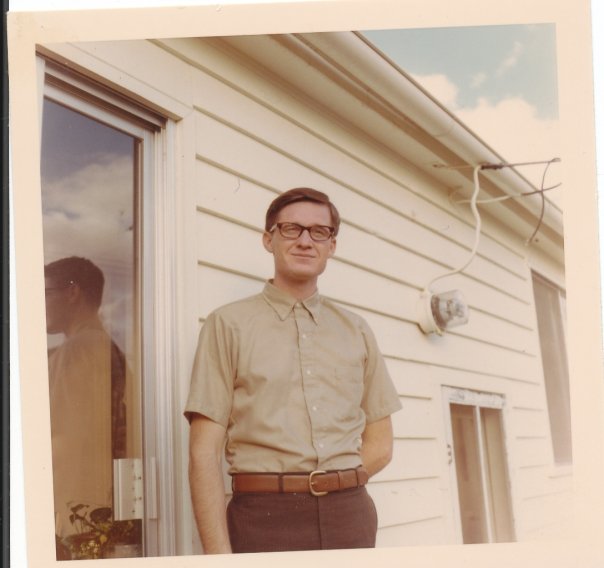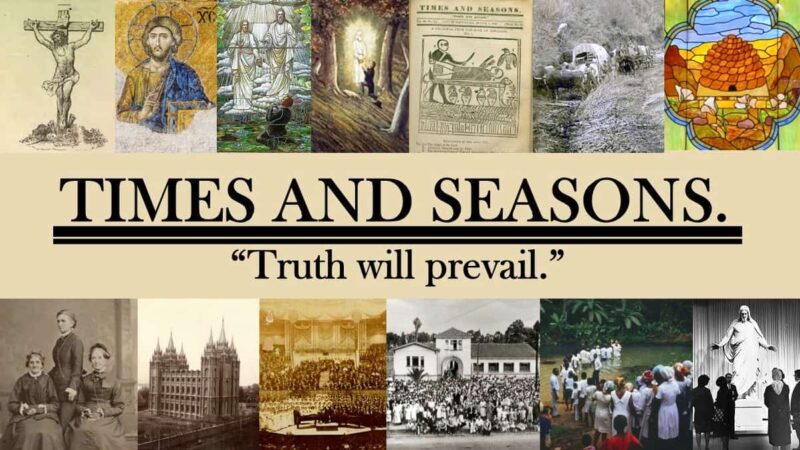Category: Church History
-
The Double-Minded Essence of Mormonism
A while ago I was reading some sermons from the 1880s in the Journal of Discourses. The 1880s, of course, is the decade when the anti-polygamy crusades were at their most intense. Thousands of Mormons were incarcerated, the Brethren were in hiding from the law much of the time, and every time you turned around…
-
En Route to the Field: Missionaries Aboard the S.S. Vestris, 1928
David Henry Huish, born in the Mormon colony of Morelos, Sonora, Mexico in 1906, and Keith Wynder Burt, born in the Mormon colony of Cardston, Alberta, Canada in 1908, met in the Mission Home in Salt Lake City late in 1928, after both young men had been called to serve missions in South America. After…
-
(Beehive) Girls Just Wanna Have Fun – 1916
In 1916, the Beehive Girls were Latter-day Saint young women ages 14 and 15 (the 12- and 13-year-olds were still in Primary). Older teens, and even the mothers of Beehive Girls, could learn the same skills and earn the same badges of honor, if they chose to. Beehive Girls from Thatcher, Arizona
-
Jensine Hostmark Grundvig: Zionward
Jensine was born in Copenhagen, Denmark, in 1837, her parents’ youngest child. Her father died when she was 4, her mother when she was 12; she probably spent her youth in the household of one of her much older brothers. In1857 Jensine was married to Frants Christian Grundvig, a young joiner who had come to…
-

What My Father Did
A few weeks ago my father retired after spending three decades working for the Church Historical Department. I’m no doubt guilty of an excess of filial piety, but I think that the Church and Kingdom are better for the work that he did.
-
The Salamander Letter in a nutshell
So, what is this scary Salamander Letter that the church is hiding from everybody?
-
Forgetting, and History
From Ernest Renan, a French 19th-century philosopher: Forgetting, and I would say even historical error, is an essential element in the creation of a nation, and that is why the progress of historical studies is often a danger for the nation itself.
-
Monument to the Restoration of the Aaronic Priesthood
While uncounted thousands of visual artists have contributed their skills to building Zion, the Fairbanks dynasty holds a special place in the world of Mormon art history: John B. Fairbanks (1855-1940) was one of the art missionaries sent to Paris by the Church, who came home to paint murals for the temples. His sons J.…
-
Laura Rees Merrill: Replacing Fear with Peace
Laura Liona Rees was born in Brigham City, Utah, in 1876, to LDS parents (her father had emigrated as a convert from England; her mother was born at Council Bluffs). With only an eighth grade, district school education, she studied for and passed the test to be licensed as a grade school teacher. Then she…
-
“You Can’t Go to Heaven in Cologne Water”: A Missionary Talk by J. Golden Kimball
If you’re going to be disappointed by a J. Golden talk that doesn’t fit the swearing-elder stereotype, stop reading now. This isn’t that kind of J. Golden story. It is a talk the future Seventy gave to a small South Carolina branch in 1891 during a period when local members – including a woman –…
-
Confidential: Have I Got a Deal for You
The original Keepapitchinin printed this “editorial” in 1870: Confidential. We have received the following letter: ”Dear Sir: – a confidential friend having notified us that you can be relied on we send you the enclosed circular.”
-
A New Book for the Mormon Canon
There are a number of Mormon pamphlets and books that have achieved a kind of semi-canonical status within Mormon studies. Everyone agrees, for example, that Parley P. Pratt’s Key to the Science of Theology or John Taylor’s Mediation and Atonement are key texts for understanding nineteenth Mormon thought. If any evidence is needed, both texts,…
-
For Those in the D.C. Area
Richard E. Turley will be speaking at the Wesley Theological Seminary this coming Sunday. Last year I posted a couple of notices about a great series of events that Greg Prince, co-author of David O. McKay and the Rise of Modern Mormonism, hosts every few months at his house in Potomac, Maryland.
-
Dotting the Earth with … Baptismal Fonts
In a day when new temples are being announced by the handful, it’s easy to forget how far we have come in making priesthood ordinances available, convenient, and even non-life threatening.
-
The Ashtabula Horror
The train known as the Pacific Express (No. 5, Lake Shore and Michigan Southern Railway) pulled out of Erie, Pennsylvania on the afternoon of December 29, 1876, headed toward Chicago. Two locomotives, christened “Socrates” and “Columbia,” towed its two passenger cars, three sleeper cars, two baggage cars, two express wagons, a smoker, and the caboose.…
-
If You Had Been a Mormon Boy Born in 1915 …
… and if you had lived in the Mormon Corridor or somewhere else with a fully organized Primary, you would have become a Trail-Builder when you turned 10 in 1925, and you would have received one of the new “First Year Books” to track your progress during the year as your learned to do some…
-
A Child’s-Eye View of the Mormon Silk Experiment
Utah’s 19th century silk industry was one of those projects encouraged by Brigham Young to stimulate home production and reduce Mormon dependence on a hostile world. Period literature is heavy on sermons advocating sericulture, treatises on raising worms and the mulberry trees they fed on, and praise for the quantities and artistry of finished articles.…
-
“The ‘Wild West’ Has Ceased to Be”
David G. at Juvenile Instructor (the blog, not the periodical) has just posted Mormonism’s Unbroken Past: Transcending the 1890 Rupture, noting that 1890 is as historically significant to the Mormons as that year is to the wider history of the West: For us, the 1890 Manifesto marked as great a shift in outlook, traditional Mormon…
-
The Totality of Mortality
When I picked up my manual to prepare to teach Gospel Doctrine this Sunday, I figured it would be a lesson about the spirit of Elijah (second week = section 2 = turning hearts, etc). I was surprised and delighted to find that Lesson 2 is instead about the atonement, highlighting powerhouse passages in Doctrine…
-
Hugs and Kisses
It’s holiday season, which means more friends and family and greetings, in person or otherwise, than usual. Add to that a few weddings receptions and you can get downright sore from all the hugging and hand-wrenching. Not to mention confused by the vast array of possibilities for saying hello or goodbye or Merry Christmas or…
-
Past and Present
It’s an intellectual banality to point out that how one thinks of the present structures how one thinks about the past. The cliché, however, is useful when thinking about Mormon history.
-
President Hinckley and J. Edgar Hoover
The FBI released its files on Gordon B. Hinckley last week in response to a FOIA request from the Salt Lake Tribune. Apparently the FBI conducted a background check on President Hinckley in 1951 in order to ensure he wasn’t a communist and clear him for a potential position with Voice of America. The results……
-
The Difficulty of Theological Interpretations of Mormon History
Providing a theological interpretation of Mormon history is tricky. I’ve argued elsewhere that one of the reasons that Mormons care so much about history is that in some sense they regard it has having a normative force. Part of how we understand God’s will is by offering an interpretation of our past that sees in…
-
“Nobody Knows” Screening
Heads up for those in the D.C. area. Earlier this Spring I posted a notice about a great series of events that Greg Prince, co-author of David O. McKay and the Rise of Modern Mormonism, hosted at his house in Potomac, Maryland. After a brief summer interlude, Brother Prince is back at it. The speaker…
-
My inner historian smiles
The little historian in me cheers for small things, such as correct phrasing. At the General Relief Society Broadcast on Saturday, September 27, Sister Barbara Thompson
-
Visions and Enivison
I am sorry I have not been posting more regularly. Hurricane Ike slowed me down a bit. However, everything is starting to get back to normal. So…. Here we go. If the nineteenth century Mormon experiment in planning claimed anything, it claimed to be founded on revelation.
-
Changing Conceptions of Zion
The Mormon conception of Zion has changed dramatically over the past century. Today’s members of the church are likely to define “Zion” as wherever the members of the church are: LDS homes, congregations, and stakes. While the conception of Zion in the 19th century may have included these elements, these Saints were determined to literally…
